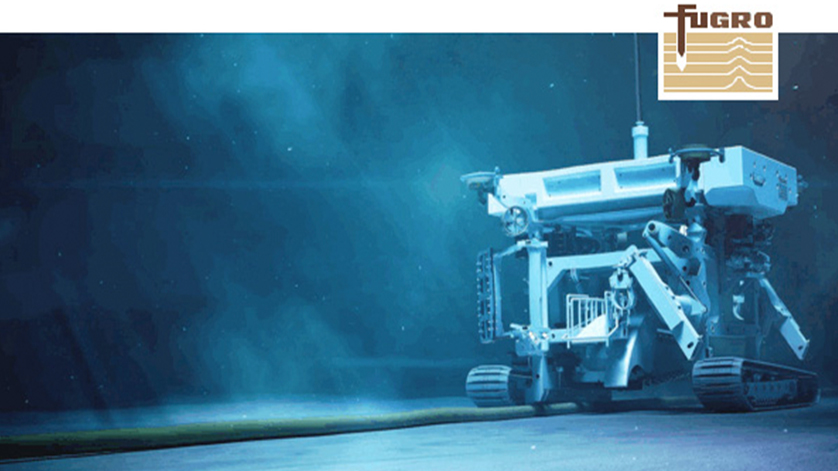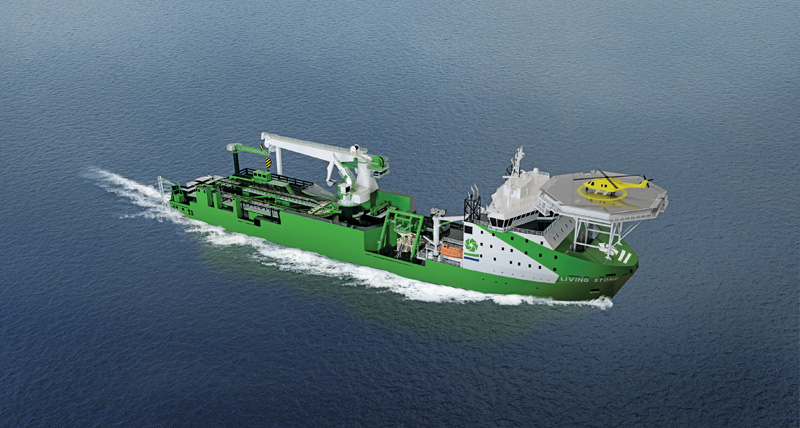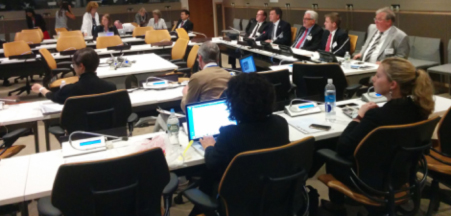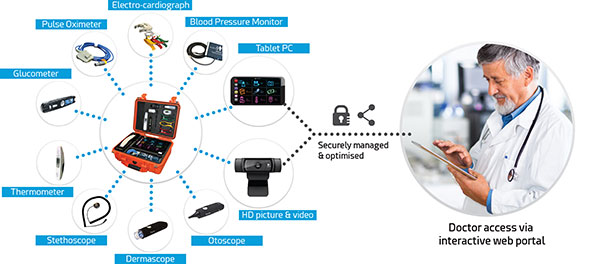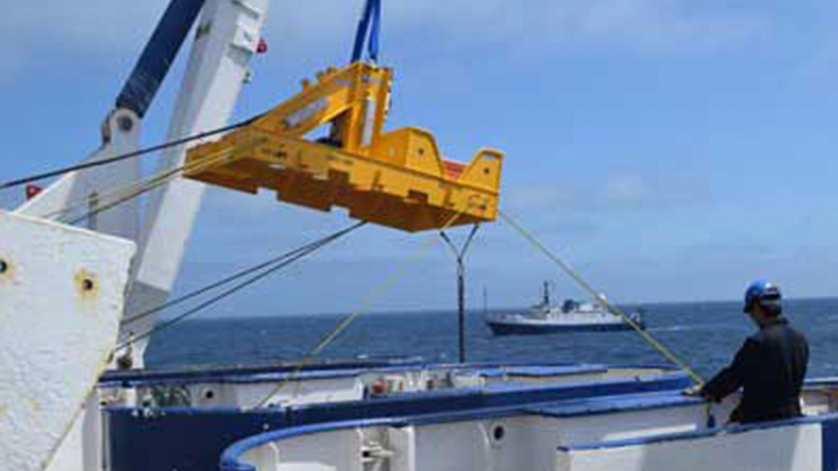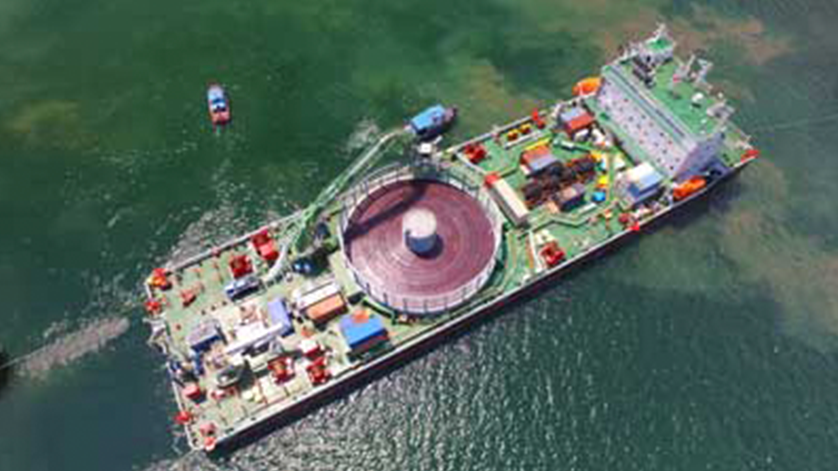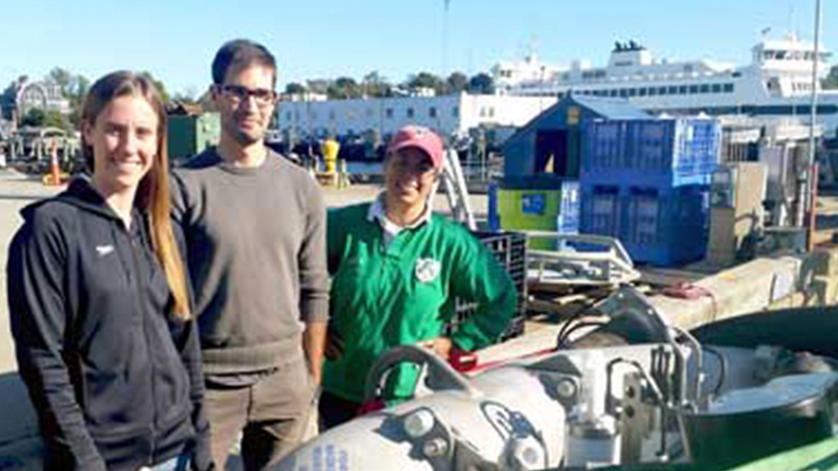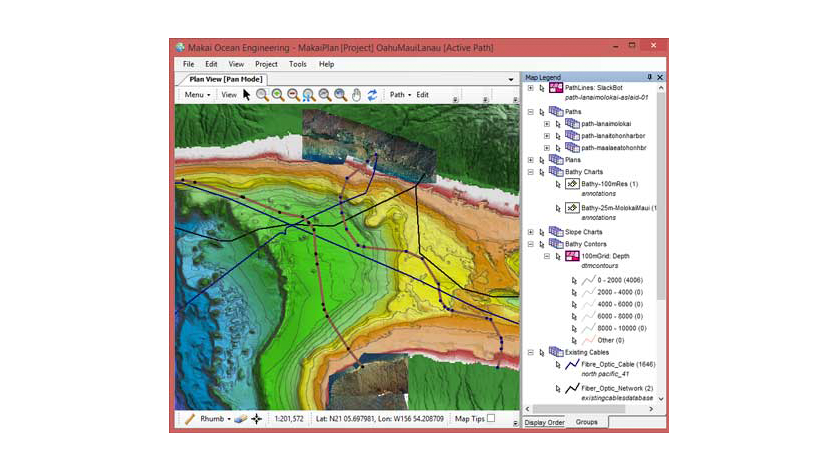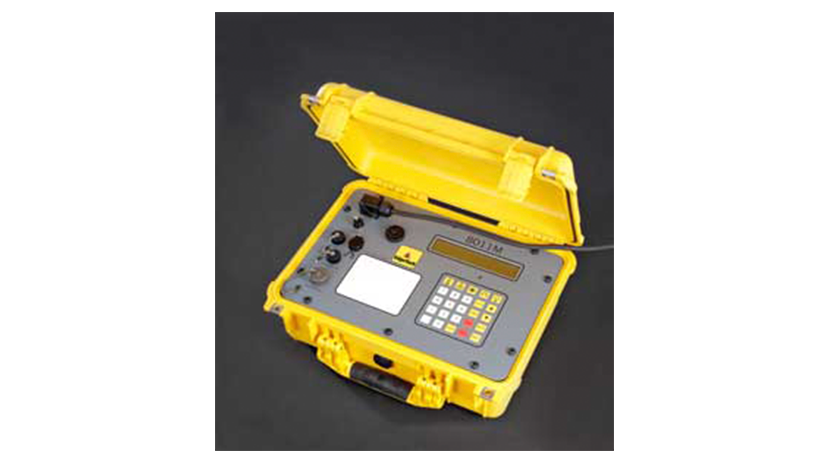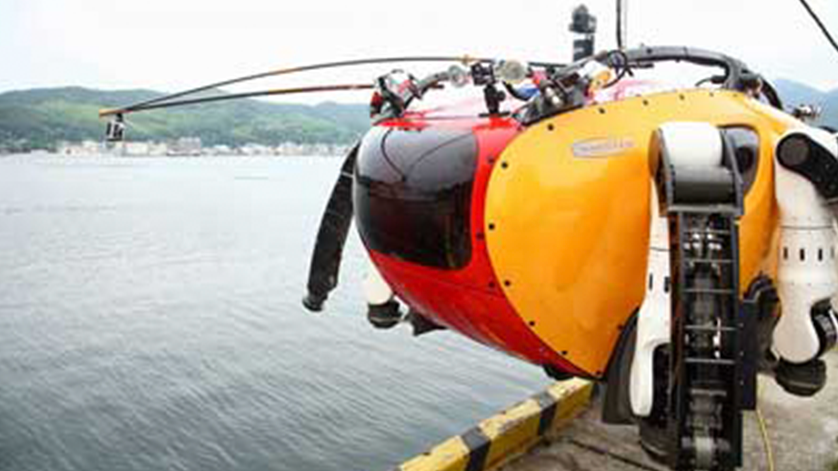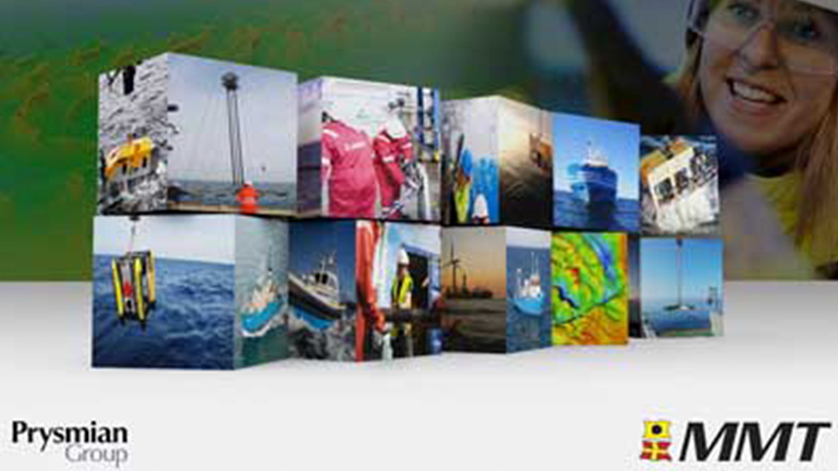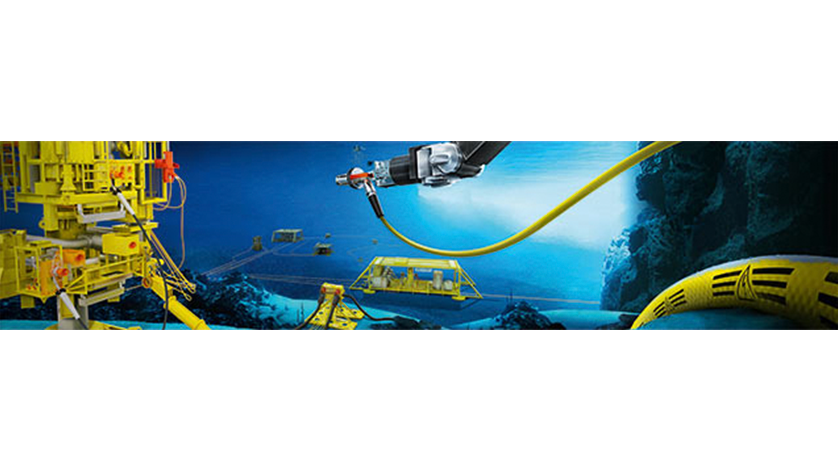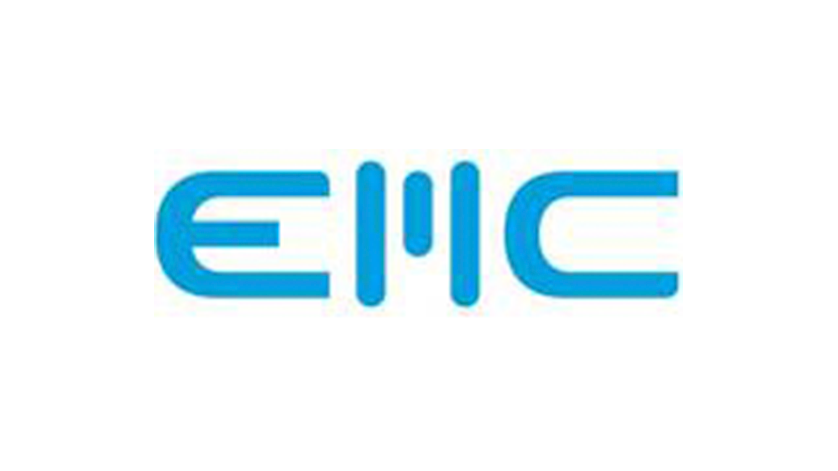An innovative development by Fugro for its work class remotely operated vehicles (ROVs) has been utilized successfully in cable lay touchdown monitoring operations at the Rampion Offshore Wind Farm.
Subsea Cable
All Stories
On September 18, 2016 DEME launched the world’s most advanced subsea cable installation and trenching vessel ‘Living Stone’ at the LaNaval shipyard close to Bilbao, Spain. The launching ceremony was initiated by Mrs. Sarah Tommelein, spouse of Mr. Bart Tommelein, Vice-Minister-President of the Government of Flanders and Flemish Minister for Energy.
The cable installation vessel ‘Living Stone’ is engineered with the latest innovations in its category. The vessel is equipped with two turntables below deck, each having a 5,000 tons cable capacity. Together the turntables can carry and transport more than 200 km of cable that can be installed in a single trip. Ample deck space of 3,500 m2 facilitates a revolutionary cable handling system with innovative and reliable cable handling tools for cable ends, connections and cable protection systems. Furthermore, the ‘Living Stone’ can be equipped with a third carrousel above deck with an additional load capacity of 2,000 tons and a 600 tons crane. A system developed in-house by Tideway enables the ‘Living Stone’ to install cables faster and more efficiently in longer lengths and with less offshore joints than any other cable installation vessel.
The vessel will serve transport and installation projects as well as offshore power cable installations, interconnectors for the future European Supergrid amongst others.
The ‘Living Stone’ features DP3 (Dynamic Positioning 3) capability and has been designed as an environmentally friendly vessel with dual fuel engines with LNG being its prime fuel. The ‘Living Stone’ has a Green Passport and the Clean Design Notation awarded to owners and operators who choose to design and operate their vessels in an environmentally sustainable approach.
The ‘Living Stone’ can accommodate a crew of up to 100 persons and will be deployed by DEME’s Dutch subsidiary Tideway. The unique vessel is scheduled to be delivered in the second quarter of 2017 and will head to its first project at the Merkur offshore wind farm in Germany, 45 km north of Borkum in the North Sea, for the installation of inter array cables. The ‘Living Stone’ will also be deployed for the cable installation at the world’s largest offshore wind farm Hornsea Project One in the UK.
Submarine Cables and marine Biological Diversity of areas Beyond National Jurisdiction (BBNJ) was the topic of discussion on Monday, 29 August 2016 during a well-attended side event held at the United Nations headquarters in New York City, New York. The International Cable Protection Committee (ICPC) presented on the organization’s role within the ocean community and highlighted its newly published and informative white paper on the subject of submarine cables and BBNJ.
The successful side event was part of the 2nd Session of the Preparatory Committee established by General Assembly resolution 69/292: Development of an international legally binding instrument under the United Nations Convention on the Law of the Sea (UNCLOS) on the conservation and sustainable use of marine biological diversity of areas beyond national jurisdiction. ICPC was represented by its Chairman: Graham Evans, Vice Chairman: Nigel Irvine, ICPC’s International Cable Law Advisor: Douglas Burnett, Robert Wargo from AT&T and James Herron from TE SubCom. ICPC is grateful to the International Chamber of Commerce (ICC) and the EastWest Institute for co-hosting the event with the ICPC.
West Institute for co-hosting the event with the ICPC.
With about 45 diplomats and NGO’s in attendance, ICPC’s expert panel discussed submarine cables in relation to: the environment, cable owners, route surveyors and ship operators as well as governance of the oceans. A senior European diplomat, who attended all of the side events at the first PrepCom, was subsequently reported as saying the ICPC side event was the best so far because it, as well as the white paper, provided substantive evidence in a real factual context and not general theory for the diplomats to consider. The ICPC also supplied samples of deep water submarine cables {typically 14-22 millimeters in diameter} and answered insightful questions from attendees after its presentation.
The presenters at the workshop demonstrated how cables are environmentally neutral to benign in BBNJ area.
Interested parties are welcome to download ICPC’s white paper and full presentation.
About ICPC
The International Cable Protection Committee was formed in 1958 and its primary goal is to promote the safeguarding of international submarine cables against man-made and natural hazards. The organization provides a forum for the exchange of technical, legal and environmental information about submarine cables and, with more than 150 members from over 60 nations, including cable operators, owners, manufacturers, industry service providers, as well as governments, it is the World’s premier submarine cable organization.
Marlink has launched XChange Telemed, an innovative new telemedicine service designed to improve the health and safety of crew and passengers at sea, while meeting new ILO/MLC and IMO/STCW labour regulations for health and medical treatment on board. XChange Telemed provides a cost-effective way for shipping companies to manage both regular and emergency medical consultations for the welfare of crew and passengers, thereby supporting the medical health of seafarers and reducing the risk of spiraling costs incurred due to medical emergencies on board.
XChange Telemed is an integrated solution that delivers instant remote medical support to vessels by doctors on shore. To ensure that crew and passengers receive fast, effective and interactive medical attention, the service includes a reinforced, vibration-proof hard-case with CE certified medical equipment, an intuitive touch-screen user interface and a HD camera. Medical equipment provided includes electro cardiograph, blood pressure monitor, pulse oximeter and one or several of the following options: Otoscope, dermascope, stethoscope, glucometer and thermometer. Clear instructions and reference diagrams are enclosed to assist the remote user with data capture, viewing and sending.
Using Marlink’s global multi-band Sealink VSAT services, XChange Telemed facilitates live video medical consultations 24/7 on board and provides doctors on-shore with full, secure web portal access to patient medical data according to the strictest European medical authority standards. For the first time in a maritime telemedicine service, customers can choose between utilising remote medical assistance from compatible public Telemedical Maritime Assistance Service (TMAS) centres, an appointed doctor or a private medical organisation.
According to an article published in International Maritime Health[1], the average cost of a vessel re-routing due to an emergency is approx. $180k (€163k). Using XChange Telemed, unnecessary diversions or helicopter evacuations could be avoided by treating crew illnesses and injuries on board with frequent follow-up by the remote doctor. While reducing down time and improving comfort for a sick or injured person on board, the service also provides traceability of the performed actions.
XChange Telemed requires no up-front investment. To ensure service continuity, hardware and software maintenance is included as part of the service, meaning that shipping companies can act on their responsibility for crew members whilst at sea by providing a highly reliable on board telemedicine service.
“XChange Telemed is a complete, fully managed telemedicine service that significantly improves and facilitates remote medical consultation by providing an integrated hardware and communications platform to enable a direct, real-time link to professionals on shore,” said Tore Morten Olsen, President Maritime, Marlink. “Supporting the health of passengers and crew is vital, but in choosing XChange Telemed on our global Sealink services, shipping companies can also meet new regulations and improve insurance processes, while reducing the potential for significant unplanned costs that may arise due to medical emergencies at sea.”
Global Marine Systems Limited has successfully completed a complex, subsea installation project for Ocean Networks Canada on their NEPTUNE ocean observatory off the West coast of Vancouver Island.
An initiative of the University of Victoria, Ocean Networks Canada (ONC) monitors ocean environments off the west and east coasts of Canada and the Arctic for scientific research, society, and industry. One of these observatories is NEPTUNE, a subsea system that comprises of an 815km loop of fiber optic cable, which connects a number of instrument sites that undertake monitoring across a wide range of ocean environments. Global Marine’s remit included the installation of four fiber optic cables with associated subsea plant on each end (mudmats).
The first phase of the project, which involved some cable recovery, was completed in October 2015; whilst the second phase that has just been completed; it presented a far greater engineering challenge. This required positioning the eight mudmats, each weighing approximately 1.8 tons with great precision in water depths ranging from 1,240 to 2,320 metres. This challenging project relied on the skill and experience of the officers and crew of the Wave Venture, who worked in combination with a second exploration vessel, Nautilus, who used its deep water ROV, Hercules, to provide touchdown monitoring of the mudmats and then connected them to the nodes and other instruments. Thanks to a high level of pre-project engineering planning and solution design, Wave Venture required only a single voyage to install the four cables and undertake some other related work.
“On behalf of Ocean Networks Canada we would like to extend a large thank you to the Wave Venture crew for their efforts and professionalism, as well as the Global Marine support team” said Ian Kulin, Associate Director, Marine Operations at ONC. “Working with the Wave Venture and the Nautilus, all planned work was completed successfully.” As a result, ONC’s top goals for 2016 were achieved.
John Walters, Director, Maintenance at Global Marine added, “This project required extensive planning by Ocean Networks Canada and Global Marine, all credit to the shipboard teams on Nautilus and Wave Venture who implemented those plans very well indeed. The outcome is testament to the versatility of Wave Venture and the North America Zone; it is not often offshore cable repair vessels are mobilized to handle mudmats and scientific nodes. We are delighted to have played our part in the reinstatement and expansion of the NEPTUNE observatory.”
Within the same voyage as the NEPTUNE cable installations, Global Marine also successfully completed an operation to reinstate connectivity to ONC’s Barkley Canyon Node under the North America Zone cable maintenance contract. This work firstly saw the Barkley Canyon spur cable recovered with the assistance of Hercules, before Global Marine experts jointed it to the 75m tail of the Barkley Canyon node, which was also on board Wave Venture having been previously recovered.
The node itself is housed inside a protective Trawl Resistant Frame (TRF), which weighs approximately 9.2 tons in total, and this was then deployed to the seabed approximately 12m from the Hydrates cable frame in 640m of water, and subsequently plugged into the node by Hercules. Next, the Upper Slope Science cable was recovered ready for ONC technicians to re- terminate. Once terminated, this was then redeployed to within the required 20m range of the node, and also plugged in by Hercules. The successfully completed maintenance operations by Global Marine have reconnected scientific instruments, which had been out of action as a result of suspected trawl fishing activity since January 2015.
Prysmian Group, a world leader in the energy and telecom cable systems industry, announces the readiness of its new cable lay vessel, named Ulisse, for offshore cable installation operations, following an investment of over 20 million Euro. The Group can now rely on a fleet of three world class vessels - Giulio Verne, Cable Enterprise and Ulisse - as well as its extensive range of well-proven in-house cable protection equipment to provide an extended and strengthened submarine cable installation capability.
“Our objective is to have a more comprehensive control of our supply chain by insourcing a greater part of the installation work and to further boost the Group’s submarine project execution capabilities with a flexible asset that can both transport submarine cables and perform cable lay and burial installation operations in shallow waters”, explains Massimo Battaini, Energy Projects Senior Vice President at Prysmian Group. “Thanks to this new vessel we can offer an ever wider and more versatile range of installation services, thus strengthening our position in a highly strategic sector for the Group”, he added.
Following the purchase from the ship owner EOS, the flat top barge has been converted into a ca. 120 m by 33 m cable layer at the PaxOcean shipyard in Singapore. Renamed Ulisse, she now has an eight point spread mooring system, enabling her to meet the operating requirements even in harsh environmental conditions. The vessel will be capable of transporting 7,000 tons of cable in a 30 m diameter carousel, and can be equipped with a carousel loading pick-up arm and a stern mounted cable chute for loading and surface lay operations.
The first project to be executed by Ulisse will be the Negros-Panay connection in the Philippines - awarded in December 2014 and worth a total of around Euro 90 million - which comprises the design, supply, installation, and commissioning of an HVAC (High Voltage Alternating Current) 230 kV submarine cable system, with XLPE insulation, along a 22 km submarine route across the Guimaras Strait.
ASL Environmental Sciences Inc. (ASL) supplied the last of the Un-Cabled Bio-acoustic Sonar Instruments for the National Science Foundation-funded Ocean Observatories Initiative (OOI) Coastal and Global Scale Nodes in June 2016. Under the terms of the contract, ASL supplied 16 Acoustic Zooplankton and Fish Profiler (AZFP) instruments for the Coastal Arrays and 20 individual instruments for the Global Arrays. The two Coastal Arrays use a single bottom mounted instrument while the four Global Arrays use one upward looking and one downward looking instrument mounted on the mid-water platform of the Apex Profiler Mooring.
Figure 1 shows part of the OOI Woods Hole Oceanographic Institution (WHOI) team in front of Multi-Function Node (MFN) bottom frame destined for the Coastal Pioneer Array, about 80 miles off Martha's Vineyard, Mass., at the edge of the continent shelf. The MFN holds a variety of chemical, biological and physical oceanographic sensors including an Acoustic Doppler Current Profiler, CTD sensor, Oxygen sensor and CO2 sensor. The acoustic transducers for the internally-powered, internally-recording AZFP echosounder with 38, 125, 200 and 455 kHz channels are shown in the lower right of the picture.
In the fall of 2015, 7 AZFPs instruments which had been deployed on the Coastal Arrays were returned to the factory for calibration verification by WHOI and Oregon State University (OSU). All 7 instruments had a 100% data recovery rate and a minor adjustment was made on the acoustic calibration of one channel of one of the instruments.
In 2016, the first AZFP instruments with 38, 70, 125, and 200 kHz channels will be deployed on the Global Arrays. These include the Argentine Basin, Station Papa, Irminger Sea, and Southern Ocean Arrays.
Makai Ocean Engineering, Inc. made multiple new sales of its popular software for route engineering, installation planning, and real-time lay control of subsea cables.
“We are pleased to announce multiple sales of MakaiPlan, MakaiPlan Pro, and MakaiLay to existing and new customers.” said Dr. Venkata Jasti, Makai’s Manager of Submarine Cable Systems. “We’ve worked hard on improving the functionality and user-friendliness of Makai’s software suite, especially for subsea power cables. Helping our customers succeed in their route engineering, installation planning, and at-sea cable laying operations is what drives us.”
Makai’s recent sales include:
Unlike other GIS software, Makai provides our clients with a comprehensive set of software tools and training that span the entire cable project, from inception to installation.
MakaiPlan is the world’s #1 cable route planning and engineering software, with over 300 licenses sold over the last 14 years.
MakaiPlan Pro is powerful and precise 3D, dynamic simulation software used to identify installation risks and prepare a detailed installation plan before ever going to sea.
MakaiLay is advanced subsea cable installation software that enables users to lay submarine cables with the highest level of accuracy, speed, safety, and reliability possible today, dramatically reducing the risk of cable failures. The software has been rigorously tested and validated, and has been used by over 75% of the global fleet of cable ships on countless commercial lays and military installations to successfully install well over 400,000 km of cable worldwide.
EdgeTech, a leader in high resolution sonar imaging systems and underwater technology, now offers a communication interface to the University of Rhode Island Inverted Echo Sounder or “URI PIES” system through the 8011M deck box.
The URI PIES system, a popular instrument for many researchers, is often moored in deep locations for extended periods of time. Acoustic communication to the instrument is value to ensure its safe return.
The EdgeTech 8011M is one of the most versatile and field-proven acoustic command and ranging deck boxes available. The system can control and range on EdgeTech’s full line of acoustic releases as well as other manufacturers’ equipment.
Features include auto switching between 115 and 230 VAC and an internal self-charging battery. The serial and auxiliary ports allow for simple interfacing with other on-board equipment. The 8011M comes standard with a dunking transducer and 67 meters of cable. The URI PIES communication interface comes standard on all new 8011M deck boxes. Customers that already own and operate an EdgeTech 8011M deck box have the opportunity to upgrade their units to include this interface as well.
Underwater communications equipment that enables video to be transmitted through the water and unmanned vehicles to be controlled without a tethered link to the surface, has been supplied to the Korean Research Institute of Ships and Ocean Engineering (KRISO) by Sonardyne Asia Pte. Ltd. in Singapore, and its Korean agent, Insung.
The BlueComm 100-series optical modems will be used to stream high-definition imagery from cameras installed on seafloor sensor platforms and command Crabster, an autonomous walking and flying crab-like robot being developed by KRISO’s ocean systems engineering department.
Transferring data using subsea modems provides a reliable alternative to using cables underwater which can be expensive to install and vulnerable to damage. However, unlike conventional acoustic-based devices that use pressure waves to send and receive relatively small packets of data at low bandwidths, Sonardyne’s BlueComm uses rapidly modulated light emitting diodes (LEDs) and high power lasers to quickly deliver very high volumes of data.
Typically operating in the 450 nanometer Blue Light region of the spectrum, data rates of up to 500 megabits per second are achievable making the technology suitable for a wide range of underwater applications that require a high bandwidth, low latency, bi-directional communications link. These include harvesting data from seabed landers using AUVs, remote video monitoring of science operations and piloting unmanned vehicles without the need for a control umbilical.
When deploying battery-powered subsea instruments and vehicles, operating life is always a major consideration for users. BlueComm’s unique method of optical data transmission is however, also highly efficient, enabling for example, one gigabyte of data to be transmitted with the energy contained within a single lithium ‘D’ sized cell over distances greater than 150 metres.
The BlueComm modem family is currently made up of three variants and to support its work, KRISO has selected the BlueComm 100 model. Featuring Ethernet connectivity and a deep depth rating, the design is optimized to offer a good balance between data rate and range in all conditions, including high ambient light.
Commenting on the contract, Anthony Gleeson, Vice President of Sonardyne in Singapore said, “Now that it’s possible to send and receive data underwater at speeds comparable to domestic broadband, it’s exciting to consider the huge range of potential applications for BlueComm.” He added, “KRISO are the first institute in our region to invest in BlueComm and we are delighted that this unique technology will help to advance their pioneering ocean research.”
For more information on BlueComm, click here.
MMT has been awarded the contract for marine survey services for cable route design and engineering for the COBRA cable project in the North Sea from Prysmian.
Ellen Svestad, CCO, comments upon the contract award: “We are really pleased over another contract award from Prysmian. The COBRA cable is the planned subsea Interconnector between the Netherlands and Denmark and is managed by two of our existing clients, namely TenneT and Energinet - the operators of the Dutch and the Danish power transmission grids. We are grateful for Prysmian’s confidence in our services and we look forward to working with them again!”
The survey contract includes inshore and offshore parts, consisting of geophysical, geotechnical and visual surveys including cable tracker for cable crossings.
MMT will conduct the surveys with their own ROTV, ROV & survey vessels Franklin, Seabeam and Ping.
The work will commence in July 2016.
Siemens has successfully developed and tested a new cost efficient product for better subsea Ethernet communication. The Advanced Converter & Switch (ACS) is making it possible to communicate at higher data rates and over longer lengths, then with the current electrical distribution technology. The ACS increases precision and effectiveness of subsea communication. This transparent communication solution can be used for connecting to existing subsea fields, for field extensions or for new developments. Over all resulting in a simple and cost-effective solution for both brownfield and greenfield applications of subsea Ethernet. The ACS is qualified to industry standards and ready for the market May 2016.
The ACS is a reliable and cost-efficient alternative to conventional upgrades of existing subsea equipment from old communication standards to Ethernet and/or fiber. It does so by linking the existing, reliable and cost-efficient technology of copper cables with fiber technology for longer lengths which achieves high speed communication for longer distances in a subsea communication network. This includes communication between sensors and control systems subsea, as well as subsea to topside communication. The result is a product that can be installed to enhance communication and data transfer from brownfields and new developments on longer and more complex step outs.
Siemens has developed a fully-qualified product that can combine and convert various types of communication up to 84 km at 3000MBSL. Today, costly umbilicals, canisters and control modules are used to distribute and convert different types of signals over longer distances subsea.
Ethernet is commonly used technology for communication from platform or land to the sea floor, and for communication on subsea applications such as interfacing sensors and as the main communication tool between electronic control modules. Its capability to provide an extended capacity is due to the relatively high bandwidth. In line with conventional standards, Ethernet-based communication on twisted copper pairs is today limited to 100 meters, thus making communication limited within the confines of the same Christmas tree. Conversely, optical fiber is capable of longer distances and, if used instead of electrical lines, the maximum distance for distributing Ethernet is increased dramatically, making communication between different Christmas trees feasible.
The basic design of the ACS comprises one-atmospheric chamber housing, a PCB card (Printed Circuit Board) and a glass-to-metal penetrator on the copper side and glass-to-glass on the fiber side. This gives a field proven sealing for the one atmospheric chamber. Its modular design may be configured in various ways, providing the possibility to combine several fiber optic and/or electrical Ethernet interfaces integrated to a flying lead, sensor harness, umbilical termination, or even a subsea Ethernet switch. The solution is based on the well field-proven Siemens Subsea products, as it is based on proven distribution technology for fiber and electrical signals and umbilical terminations. Same sealing technology as used on the Siemens Advanced Fiber Terminations (AFT) and Advanced Cable Terminations (ACT).
Performance can be monitored continuously or when necessary and does not require reconfiguration if units connected to the electrical subsea interfaces are replaced or upgraded. Challenges in power consumption, EMC, signal monitoring and conversions have been solved with the development of the modular PCB card, specially designed for installation in existing and field proven subsea technology.
EMC has announced a new global Ku-band VSAT package of connectivity and content for ships at sea, optimized for the next-generation high-throughput satellite (HTS) networks that are now being deployed.
“Designed with crew welfare as a top priority, the new EMC VSAT platform offers a combination of services and capabilities never before available from a single marine VSAT supplier,” said Gilles Gillesen, president of EMC’s commercial shipping business unit. “New features include our exclusive SpeedNet™ high-speed web browsing service, live TV programming delivered through the Ku-band network, video and entertainment on demand and a powerful new account management portal – all wrapped up in a competitively priced package.”
SpeedNet: Redefining the Internet Experience at Sea
EMC’s patented SpeedNet technology solves the age-old problem of latency in web access at sea. Using a proprietary intelligent protocol and global backbone, SpeedNet predictively fetches, compresses and pushes multiple layers of websites at once to local servers. The net result for the end-user is a browsing experience that mimics being on high-speed fiber. SpeedNet works in the background on mobile and desktop browsers, to accelerate page load times dramatically. SpeedNet is built into all EMC ship installations as a standard feature, not an expensive option.
As an example, side-by-side comparison tests revealed the average time for accessing BBC.com’s home page was only 4.6 seconds with SpeedNet and 21.2 seconds without it over the same satellite connection.
“Even though latency is inherent in satellite communications, we no longer have to accept it as a fact of life,” said Gillesen. “We can now give users at sea the same quality of experience they are accustomed to getting when browsing the web at home.”
Live TV Programming
Starting this summer, EMC will begin broadcasting live TV programming over the same Ku-band network that delivers voice and data services, using a single satellite antenna on board. The first two live TV channels to be offered are BBC News and Sport 24. The Sport 24 channel features live coverage of Barclays Premier League, UEFA, Formula 1 racing, PGA, NBA, NHL, Euroleague Basketball, Wimbledon, U.S. Open Tennis and more. The service will be offered regionally and expanded over time. Expansion plans include additional live channels and a content-rich suite of on-demand entertainment options later this year.
“This is the next step in bringing crewmembers more of the comforts of home, easing the burden of loneliness and the feeling of separation often experienced during long sea voyages,” said Gillesen.
Advanced Billing and Management Tools
EMC is also launching a new back-end billing and account management platform that allows crew and network admins to manage both voice and data plans from a single portal. Admin and crew networks can be managed separately. It’s easy to change the settings for different data allowances, credit limits and content filters. Individual crewmembers can directly manage and top up their plans with prepaid options. They can even transfer funds to mobile accounts of friends and family at home on more than 400 carriers in more than 100 countries.
Global Coverage, Worldwide Support, Lowest Cost of Ownership
EMC provides global coverage with reliable Ku-bandwidth and seamless beam handovers. EMC operates 21 fully meshed multiprotocol label switching (MPLS) interconnected teleports in the United States, Europe, South America, Africa and Asia. The company’s support centers around the world are staffed by EMC field engineers, augmented by a network of third-party service providers.
EMC’s compact hardware configurations provide a low cost of entry for ship managers, and EMC’s unmatched satellite-capacity buying power translates into the lowest-possible airtime rates for customers, according to Gillesen.
HTS Ready
“We believe our patented innovations like SpeedNet, our new services like Ku-band live TV and our global network infrastructure will put us in a good position to take full advantage of the HTS payloads as the new satellites come into service this year, allowing us to bring land-like communication, internet and entertainment to ships at sea,” said Gillesen.

